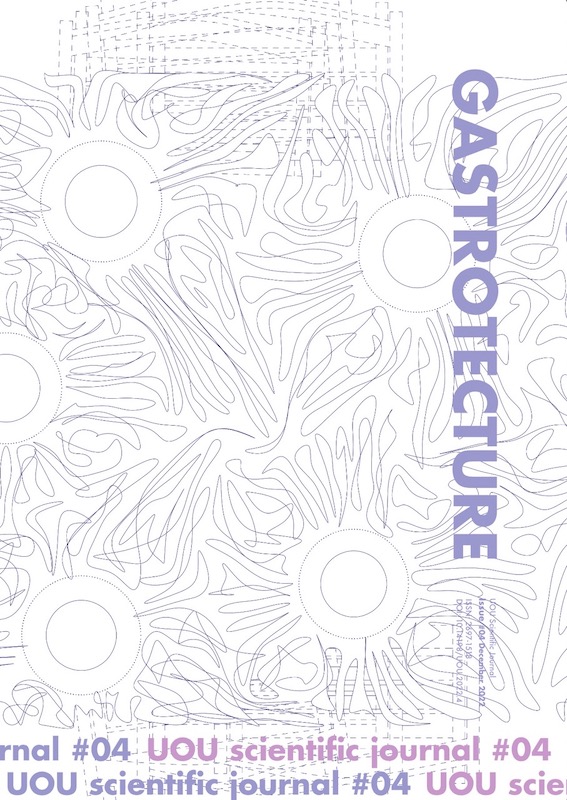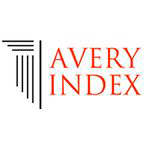Can we eat Earth Buildings?
Abstract
Earth-based materials (namely, mud or dirt architecture) have been used for over millennia and are still sheltering approximately a third of the world population. These materials are currently experiencing a new Renaissance with upscaled construction methods and digital fabrication technologies introduced by scientific literature that is highly focused on the mineralogical and particle characterization of optimal mixtures. Similarly, clay-based materials have been traditionally used as edible substances in almost every global region: from the Middle East to India, and from Western Europe to the Caribbeans and Africa. Traditional recipes such as bonbon tè (Haitian mud cookies) and the Calabash Chalk (West Africa) have been used as part of human diet for religious beliefs, traditional local medicine, or as part of a regular menu. Studies in the field of edible clay have shown that pregnant women crave dirt, clay, or charcoal if their bodies are deficient in key minerals, a custom that has been interpreted by Western investigators as a pathology named Geophagia. This paper presents an empirical and experimental investigation into the mineralogical content within earth materials and its role in building and human metabolism. A critical literature review of earth materials and their particle mineral content is presented, while analyzing, comparing, and contrasting the ingredients that make a good buildable and edible earth artifact. The analysis in this study reveals that both buildable and edible soil compositions share a common mineralogical base: the microstructure and water sorption capacity of clay minerals. As a final demonstration, this paper presents an architectural installation that maps earth artifacts for their buildability and edible possibilities. This paper critically contributes to the scientific architectural field by provoking questions regarding the mutual dependencies between humans and their surrounding natural resources, while testing ideas and beliefs regarding the nature-culture divide that governs existing environmental paradigms.
Funding
Sharon Yavo Ayalon, Cornell Tech, New York, Amy Zhang, GSAPP, Columbia University, The Natural Materials LabDownloads
References
BBC News. 2014. “Who, What, Why: Why Do People Eat Clay? .” BBC News. 2014. https://www.bbc.com/news/blogs-magazine-monitor-27323160.
Ben-alon, Lola. 2020. “Natural Buildings: Integrating Earthen Building Materials and Methods Into Mainstream Construction.”
Ben-Alon, Lola, Vivian Loftness, Kent A. Harries, Erica Cochran Hameen, and Michael Bridges. 2020. “Integrating Earthen Building Materials and Methods into Mainstream Construction.” Journal of Green Building 15 (1): 87–106. https://doi.org/10.3992/1943-4618.15.1.87.
Bolton Seed, H, M Asce, Richard J Woodward, F Asce, and Raymond Lundgren. 1962. “Prediction of Swelling Potential for Compacted Clays.” Journal of the Soil Mechanics and Foundations Division 88 (3): 53–87. https://doi.org/10.1061/JSFEAQ.0000431.
Carretero, M. Isabel. 2002. “Clay Minerals and Their Beneficial Effects upon Human Health. A Review.” Applied Clay Science 21 (3–4): 155–63. https://doi.org/10.1016/S0169-1317(01)00085-0.
Dahms, P. 1897. “Uber Bergmehl Und Diatomeenführende Schichten in Westpreussen.” Naturwissenschaftliche Wochenschrift 1 12: 385–88.
Darling, Erin K., Clement J. Cros, Pawel Wargocki, Jakub Kolarik, Glenn C. Morrison, and Richard L. Corsi. 2012. “Impacts of a Clay Plaster on Indoor Air Quality Assessed Using Chemical and Sensory Measurements.” Building and Environment 57 (November): 370–76. https://doi.org/10.1016/j.buildenv.2012.06.004
Giuffrida, Giada, Rosa Caponetto, and Francesco Nocera. 2019. “Hygrothermal Properties of Raw Earth Materials: A Literature Review.” Sustainability (Switzerland) 11 (19). https://doi.org/10.3390/su11195342.
Gomes, Celso de Sousa Figueiredo. 2018. “Healing and Edible Clays: A Review of Basic Concepts, Benefits and Risks.” Environmental Geochemistry and Health 40 (5): 1739–65. https://doi.org/10.1007/s10653-016-9903-4.
González, Raquel, Fermin Sánchez De Medina, Olga Martínez-Augustin, Ana Nieto, Julio Gálvez, Severiano Risco, and Antonio Zarzuelo. 2004. “Anti-Inflammatory Effect of Diosmectite in Hapten-Induced Colitis in the Rat.” British Journal of Pharmacology 141 (6): 951–60. https://doi.org/10.1038/sj.bjp.0705710.
Kaczyński, R, and B. Grabowska-Olszewska. 1997. “Soil Mechanics of the Potentially Expansive Clays in Poland.” Applied Clay Science 11 (5–6): 337–55. https://doi.org/10.1016/S0169-1317(96)00032-4.
Kallipoliti, L., and A. Markopoulou. 2022. “The 2022 Tallinn Architecture Biennale on ‘Edible; Or, The Architecture of Metabolism.’”
Karpiński, B, and M. Szkodo. 2015. “Clay Minerals – Mineralogy and Phenomenon of Clay Swelling in Oil & Gas Industry.” Advances in Materials Science 15 (1): 37–55. https://doi.org/10.1515/adms-2015-0006.
Katz, J. 2008. “Poor Haitians Resort to Eating Dirt.” National Geographic News. 2008.
Lallanilla, Marc. 2005. “Eating Dirt: It Might Be Good for You - ABC News.” Abc NEWS. 2005. https://abcnews.go.com/Health/Diet/story?id=1167623&page=1.
Liu, Yong Ling, Nasser Malik, Gareth J. Sanger, Mark I. Friedman, and Paul L.R. Andrews. 2005. “Pica - A Model of Nausea? Species Differences in Response to Cisplatin.” Physiology and Behavior 85 (3): 271–77. https://doi.org/10.1016/j.physbeh.2005.04.009.
Mansour, Sabria Malika. 2020. “Behavior of Self- Compacting Concrete Incorporating Calcined Pyrophyllite as Supplementary Cementitious Material.” Journal of Building Materials and Structures 7 (1): 119–29. https://doi.org/10.34118/jbms.v7i1.744.
Martinez, DJS. 2017. “Concrete Colonialism: Architecture, Urbanism, Infrastructure, and the American Colonial Project in the Philippines.” https://academiccommons.columbia.edu/doi/10.7916/D88P6BXX.
Murtić, Senad, Ćerima Zahirović, Lutvija Karić, Josip Jurković, Hamdija Čivić, and Emina Sijahović. 2020. “Use of Pyrophyllite as Soil Conditioner in Lettuce Production.” Nature Environment and Pollution Technology 19 (1): 355–59. https://neptjournal.com/upload-images/(38)D-961.pdf.
Narloch, Piotr, Piotr Woyciechowski, Jakub Kotowski, Ireneusz Gawriuczenkow, and Emilia Wójcik. 2020. “The Effect of Soil Mineral Composition on the Compressive Strength of Cement Stabilized Rammed Earth.” Materials 13 (2). https://doi.org/10.3390/ma13020324.
Niroumand, Hamed, M.F.M. Zain, and Maslina Jamil. 2013. “Various Types of Earth Buildings.” Procedia - Social and Behavioral Sciences 89: 226–30. https://doi.org/10.1016/j.sbspro.2013.08.839.
Pacheco-Torgal, F., and Said Jalali. 2012. “Earth Construction: Lessons from the Past for Future Eco-Efficient Construction.” Construction and Building Materials 29 (April): 512–19. https://doi.org/10.1016/j.conbuildmat.2011.10.054.
Racusin, JD, and A McArleton. 2012. “The Natural Building Companion: A Comprehensive Guide to Integrative Design and Construction.” Choice Reviews Online 50 (04): 50-1883-50–1883. https://doi.org/10.5860/choice.50-1883.
Schnitzler, Eugene. 2022. “The Neurology and Psychopathology of Pica.” Current Neurology and Neuroscience Reports. Springer. https://doi.org/10.1007/s11910-022-01218-2.
Schulze, Darrell G. 2018. “An Introduction to Soil Mineralogy.” In Soil Mineralogy with Environmental Applications, 7:1–35. https://doi.org/10.2136/sssabookser7.c1.
Strose, K., and H. Suhle. 1891. “Strose, K., and H. Suhle. 1891. Mitteilung Uber Das... - Google Scholar.” In IX Jahresbericht Des Friedrichs-Realgymnasiums Und Der Vorschule Des Fridericianum Fur Das Schuljahr. https://scholar.google.com/scholar?hl=en&as_sdt=0%2C33&q=Strose%2C+K.%2C+and+H.+Suhle.+1891.+Mitteilung+uber+das+Diatomeenlager+bei+Klieken+in+Anhalt.+In+IX+Jahresbericht+des+Friedrichs-Realgymnasiums+und+der+Vorschule+des+Fridericianum+fur+das+Schuljahr+.
Vermeer, Donald E., and Dennis A. Frate. 1975. “Geophagy in a Mississippi County.” Annals of the Association of American Geographers 65 (3): 414–24. https://doi.org/10.1111/j.1467-8306.1975.tb01049.x.
Wiley, Andrea S., and Solomon H. Katz. 1998. “Geophagy in Pregnancy: A Test of a Hypothesis.” Current Anthropology 39 (4): 532–45. https://doi.org/10.1086/204769.
Wong-Shing, Kim. 2020. “I Tried Eating Clay For 3 Days For The Sake Of My Health.” LittleThings.Com. 2020. https://littlethings.com/lifestyle/eating-bentonite-clay.
Yanguatin, H, J Tobón, and J. Ramírez. 2017. “Pozzolanic Reactivity of Kaolin Clays, a Review | Reactividad Puzolánica de Arcillas Caoliníticas, Una Revisión.” Revista Ingenieria de Construccion 32 (2): 13–24. https://www.academia.edu/download/54542302/631-5498-1-PB.pdf.
Young, Sera L., Paul W. Sherman, Julius B. Lucks, and Gretel H. Pelto. 2011. “Why on Earth?: Evaluating Hypotheses about the Physiological Functions of Human Geophagy.” Quarterly Review of Biology 86 (2): 97–120. https://doi.org/10.1086/659884.
Downloads
Published
How to Cite
Issue
Section
License
Copyright (c) 2022 Lola Ben-Alon

This work is licensed under a Creative Commons Attribution 4.0 International License.
The authors keep their rights upon their work, although they transfer, in a non-exclusive way, the rights of exploitation (reproduction, publication, distribution, public dissemination and presentation) to the Journal. The authors are, therefore, free to enter additional, separate contracts for the non-exclusive distribution of the version of the work published in the Journal (for instance, by hosting in an institutional repository or publication in a book), provided credit is given that the work was initially published in this journal. The works are published under a Creative Commons Attribution 4.0 (CC BY 4.0) license.












